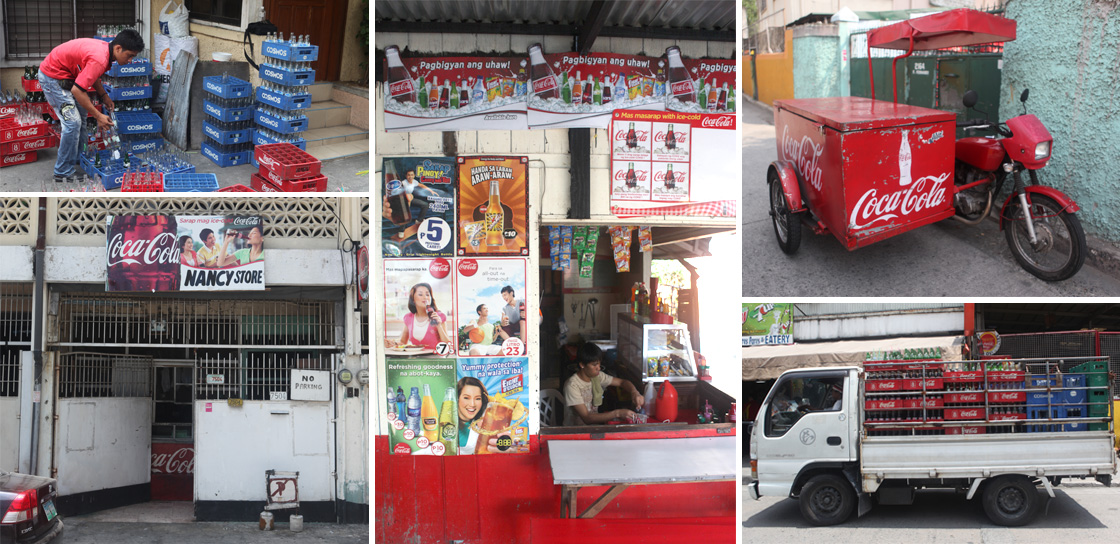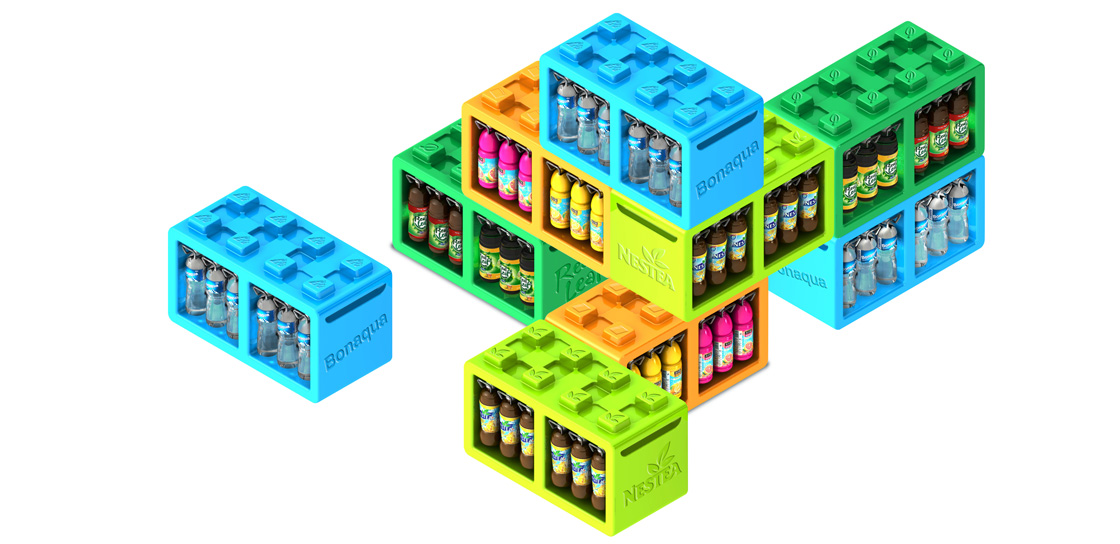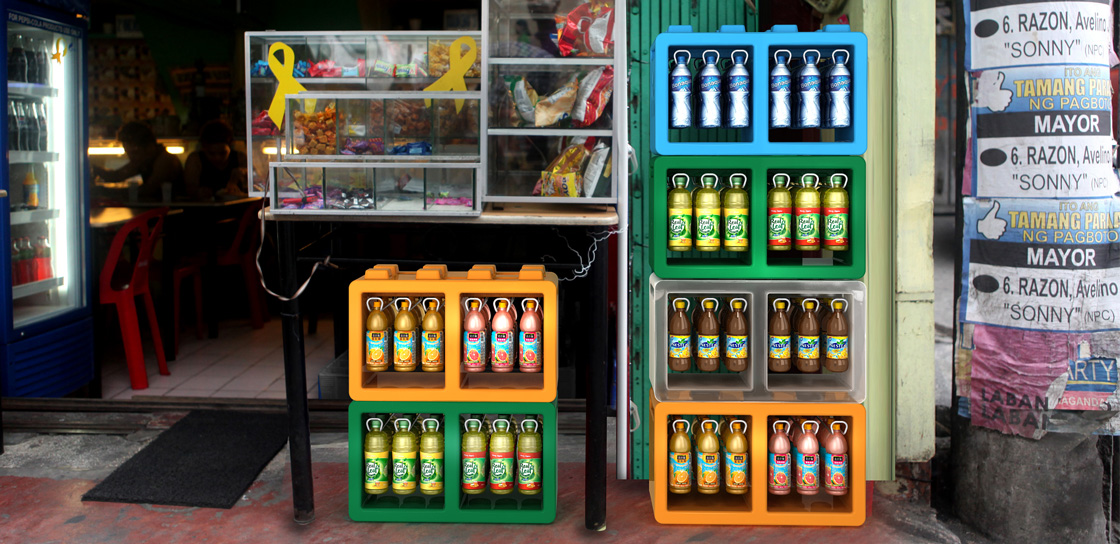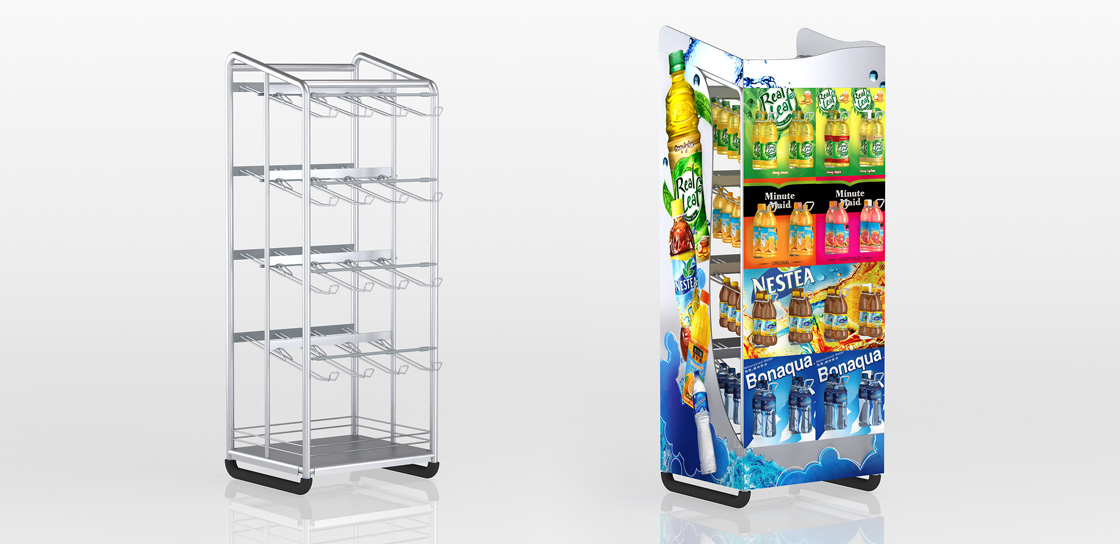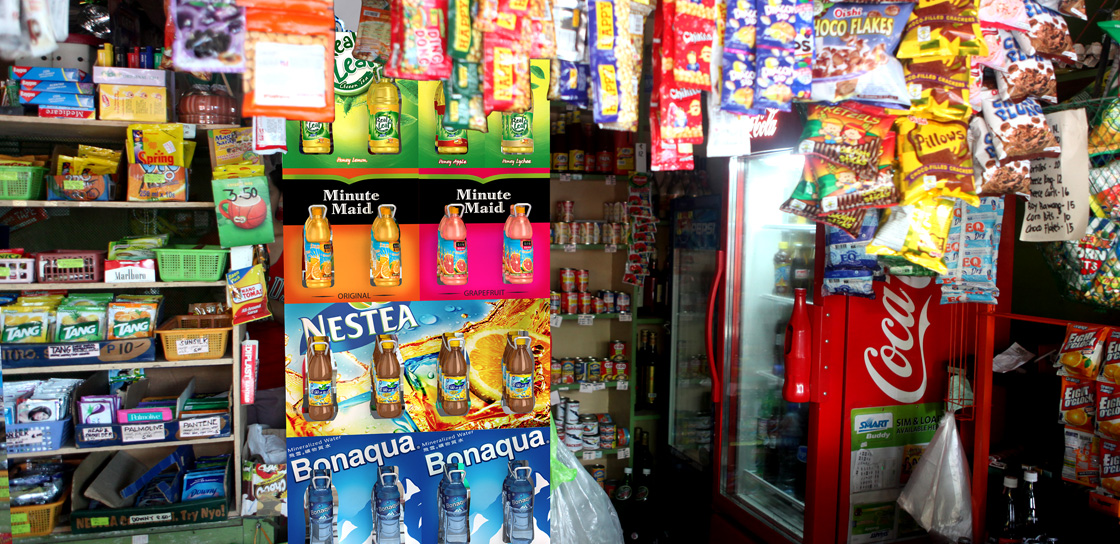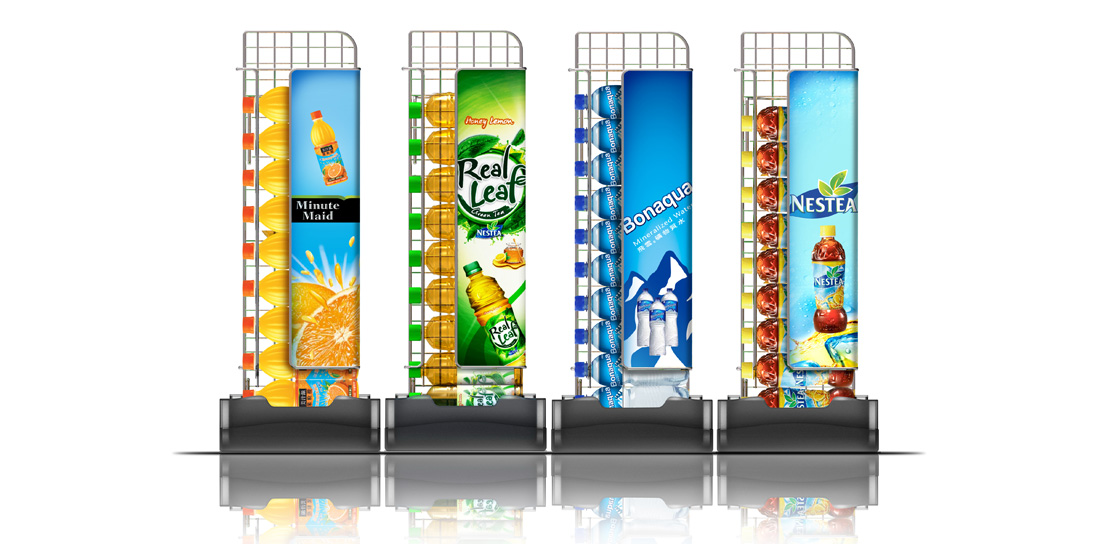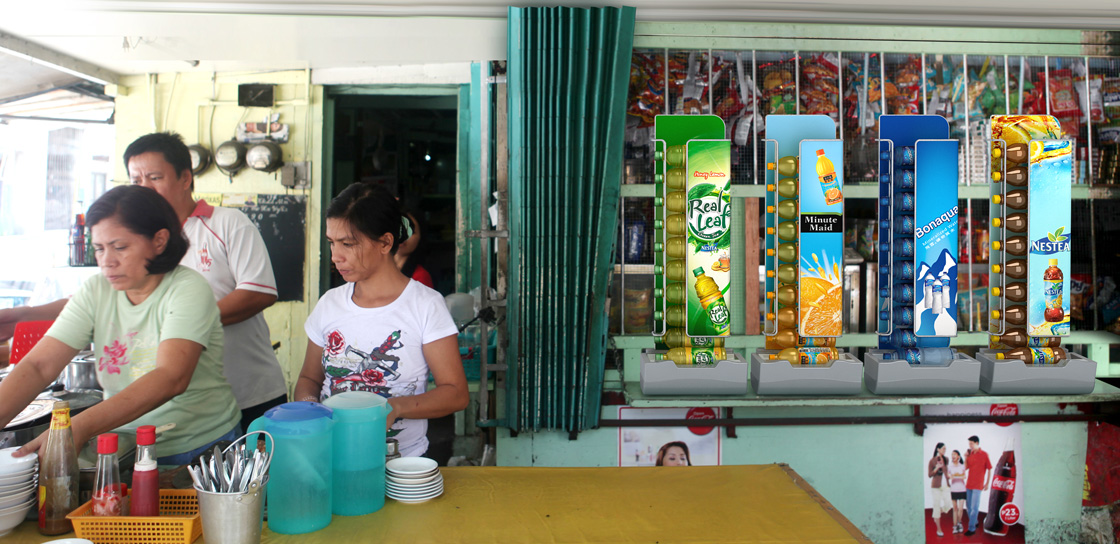Jared Richardson
BRAND DESIGN INNOVATION
Modular merchandizing for developing markets
In developing markets, such as the Philippines, Sari-sari stores, although tiny in volume and footprint, account for Coca-Cola’s largest single channel, when taken in aggregate. They also represent a whole host of challenges, such as little or no signage – making them hard to find, tiny amounts of real estate making stocking impossible and cluttered environments requiring merchandizing to be re-thought.
Challenge
In developing markets, The Coca-Cola Company has two product tiers, sparkling and non-sparkling beverages. In Sari-sari stores, the non-sparkling beverages suffer most from lack of merchandizing due to cluttered stores, scarce real estate and lack of electricity. The sparkling portfolio; Coca-cola, Sprite and Fanta are protected inside branded, chilled coolers. However, the non-sparkling brands; the juices, milky-pulpy’s, teas, energy drinks and waters (specific to local markets) have very little protection and no refrigeration.
Coca-Cola needed a modular system that could be manufactured locally, be brand flexible, durable, allow for multiple configurations, expand the footprint of each store and cost less than $70 US dollars per component.
What We Did
We spent days on the ground in the Philippines and Vietnam with Coca-Cola people through-out the local delivery supply chain – from management to bottlers and store owners. We had many insights and learning experiences such as that fact that a Coke (or any sparkling sub-brand) bottle never leaves the foot print of the store but is instead poured into a plastic bag with a straw. This is how consumers experience sparkling beverages and makes glass a hugely effective and durable material for the Coke supply chain. Bottles are collected, cleaned, refilled and reused.
To answer store clutter we took advantage of the breath of the beverage portfolio and developed the Beverage Showcase. A strong steel frame containing gravity-fed hanging racks for dispensing and easy re-stocking. Interchangeable clip-on branded face plates allowed for multiple layout configurations for each brand. This allowed store owners to react in real time to customer demand, changes in environment (weather) and stocking realities. Each frame had the capacity for 96 PET bottles.
To address the need for greater flexibility and modular brand building, we created Branded Bricks. A system of interlocking bricks molded from recycled PET (rPet). Each sub-branded (brand color and logo mold) brick could hold up to 24 500mL bottles in hanging racks, this took advantage of uniform bottle necks to ensure perfect presentation of each brand brick. The system encouraged unlimited stacking configurations, both inside and outside the store.
To cool outside the cooler, we took advantage of new, cheap super ice that was being distributed by bicycles daily – to create the Cooling Towers. Each tower contained gravity-fed bottles stacked above a tray of super ice (regular ice worked too). We designed interchangeable brand panels, for flexibility, and a foot and hanging hook so each rack could exist as a stand-alone tower, or attach itself to a cooler (or other wall space or merchandizing system). The goal was not to create a ice cold refreshment, but rather create some refreshment beyond ambient temperatures.
